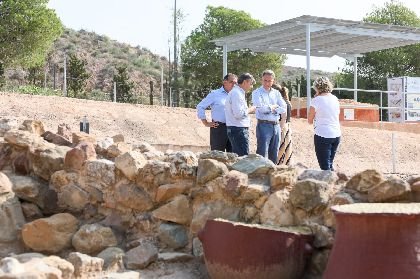The first city of El Argar in the plain that was managed in the Iberian Peninsula and one of the most prominent in the south: eastern Spain can be visited next Tuesday during the jewels as guided by the technicians of the Municipal Archaeological Museum.
During the tour, you could see six houses, thirteen tombs, and an educational area where one of the 4,000-year-old city houses was recreated.
Fulgencio Gil Jódar, Primary: «The archaeological park is attributed to the El Argar culture, the Bronze Age, which developed in the south-east of the Iberian Peninsula between 2200 and 1500 BC.»
On Wednesday, June 4, 2025. The Archaeological Park of Chipre, in Torrecilla, will join the more than 5,000 events in 30 countries that will take place on the 13th, 14th, and 15th of this month to commemorate the European Archaeology Conference, Aje. It will do so with a very special visit, «Fascinating life and death in a city 4,000 years ago: the archaeological park of Chipre,» which will be presented by the technicians of the Lorca Archaeological Museum as guides.
A few days after being able to participate in this proposal and in others that the Castle, the mayor, Fulgencio Gil Jódar, wanted to visit the archaeological park of Chipre that was inaugurated in 2004 and has just transformed two decades. «It was the first city located in the plain of the El Argar culture in the Iberian Peninsula and one of the most prominent in the south, eastern Spain. The visits are continuous, but we wanted to fit in on the occasion of the European Archaeology Conference, which will be led by the technicians of Mual, who accompany what can be seen.»
At this location, he explained: «The environment of the plants that could have existed in Lorca 4,000 years ago. The archaeological site of the Cyproads is attributed to the El Argar culture (the Bronze Age) that developed in the south, east of the Iberian Peninsula between 2200 and 1500 BC.» The city is located on a gentle hill, with isolated houses, without defensive constructions. The houses have a horseshoe shape and served as home, work, and cemetery. The cemeteries were made in stone boxes (CISSS) and jars, where the body was flexed and accompanied by metal objects (tools and weapons), personal adornments (earrings, expanders, bracelets), ceramic vessels, and food.
The mayor recalled that the city appeared due to works carried out in the sports complex of Torcilla in 1992. The finding led to an archaeological excavation that lasted until 2002. Then, a job training workshop allowed the cessation of excavation, opening the Chiprestets archaeological park in early 2004, as that was how to live this moment. Jódar.
Some of these pieces and objects found in the Chipre archaeological park participated in temporary exhibitions. «It is customary for the pieces and objects from our Municipal Archaeological Museum to travel to other cities to be exhibited in temporary exhibitions. 13 or 14 pieces from the Chipre archaeological park participated in the «Dynasties» exhibition in Alicante, but not the only one. It is ordinary, but it is determined by the importance of the pieces,» he added.
In his tour, the same one who will visit the site next Tuesday, considered six houses, thirteen tombs, and an educational area where one of the houses was recreated. «Lorca has a very important archaeological heritage, which constantly feeds new discoveries because we never stop digging. The old town of the city is an example. The recovery of the «Old Town» will expand some of those chapters in our history,» he concluded.

